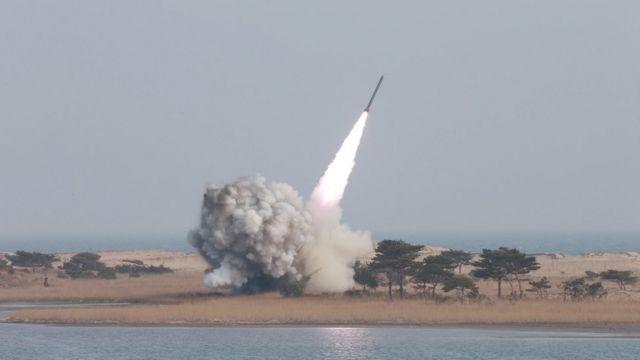"Beats Flex-fragment design special edition" is now on sale on Apple's official website
11/03/2022

Just after noon on September 15th, North Korea launched two short-range ballistic missiles. It landed in Japan's EEZ (Exclusive Economic Zone) in the Sea of Japan, and the first warning to ships from the Japan Coast Guard was issued at 12:38.
According to an analysis by the South Korean Joint Chiefs of Staff, it was launched at 12:34 pm and 12:39 pm from the vicinity of Yangdok County, South Pyongan Province in central North Korea, with a horizontal distance of 800 km and maximum altitude. It flew 60 km and landed in the Sea of Japan.
The maximum altitude is quite low for a ballistic missile, and the "pull-up maneuver" that lifts the nose after descent has been confirmed, so it is presumed to be an improved version of the Iskander type. A mobile ballistic missile capable of limited gliding flight.
Iskander's extended and improved version was tested for the first time on March 25th of this year, and at this time it flew at a horizontal distance of 600km (the South Korean military miscalculated that day as 450km) and a maximum altitude of 60km. However, the September 15th test flew a horizontal distance of 800km, so it is possible that the test was carried out to extend the flight distance by significantly reducing the weight of the warhead. Or maybe the test on March 25th was deliberately suppressed without firing at maximum performance.

The maximum altitude of 60km is too low to be dealt with by the SM-3 interceptor's outer-atmospheric interceptors. It should be noted that the range has been extended to 800 km while keeping the maximum altitude at 60 km, and it may be necessary to hasten the development of a new interceptor missile.
A flight distance of 800 km is a distance that can reach Osaka if you advance to the very end of the 38th degree line. In actual operation, it is impossible to place valuable ballistic missiles at the front line where it is easy to find them, so even if they are placed slightly behind, most of western Japan such as Fukuoka and Hiroshima will be within range.
In addition, if you are aiming for Tokyo, you will need a minimum range of 1100km, and practically about 1300km. If the extended and improved Iskander has a range of 800 km by reducing the weight of the warhead, it cannot be expected to extend the range any further with simple improvements.
However, in the report of the party convention announced on January 9 this year, North Korea plans to develop a hypersonic gliding missile that is even better at gliding than a mobile ballistic missile that can glide in the future. 비행전투부 (Hypersonic Gliding Flight Combat Department)”.
If North Korea's development plan continues, it may be possible to obtain a hypersonic weapon that can reach Tokyo "while maintaining a low altitude" in 10 to 20 years.
In that case, it will be necessary to introduce a new type of interceptor missile for hypersonic weapons that the United States is developing.
It is no longer possible to deal with "enemy base attack capability". Since North Korea's latest Iskander-enhanced variant uses solid rocket fuel, it has only a few minutes to prepare for launch. The delay time is too short, so it is impractical to stop the launch with an attack.